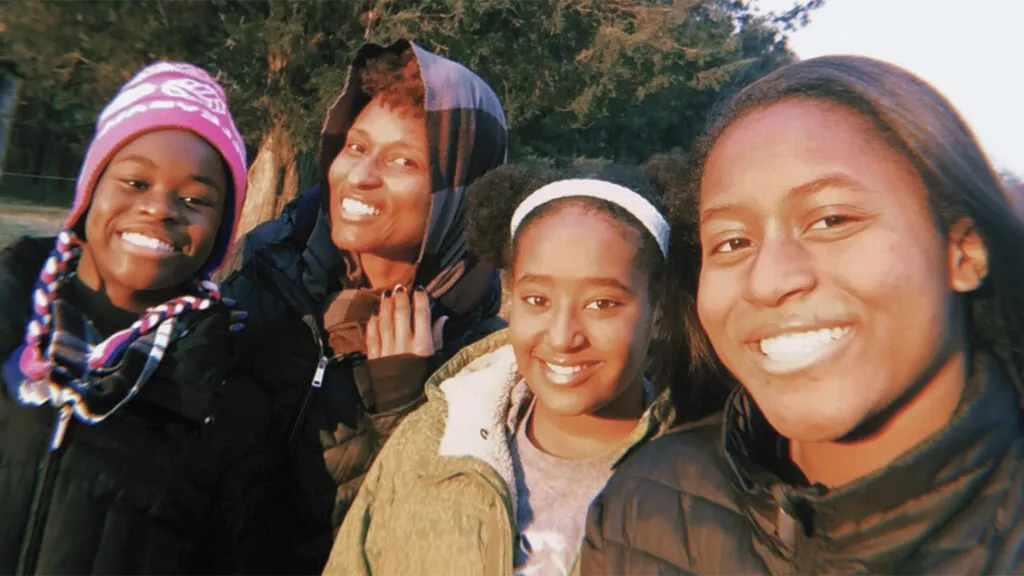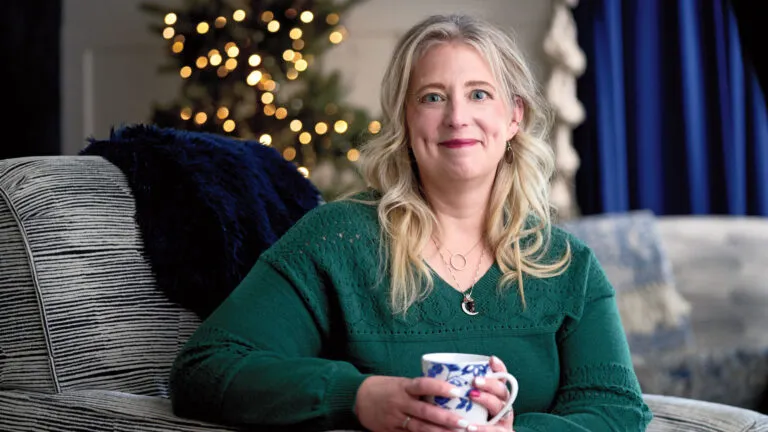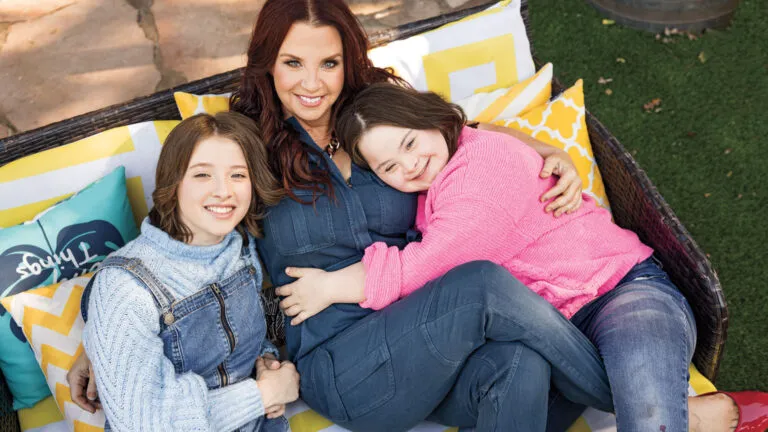I sat in my car at the school bus stop, waiting for my 14-year-old daughter, my heart racing with anxiety. “God, please let Kennedi be on that bus,” I whispered.
That morning, when I dropped her off at the bus stop, she stormed out of the car, shouting tearfully, “I hate my life, and you just don’t understand! I’m not coming home after school!”
It had been like that for weeks. All of a sudden, my considerate and high-achieving daughter was talking back to my husband, Kenny, and me. Being dishonest. Telling me she hated her life and thought I was a terrible mom.
The changes started after Christmas break, when volleyball season was over and she fell in with a new group of friends. Seemingly overnight, my 14 years of hard work as a parent went out the window. I prayed. Doubled down on rules. Begged Kennedi to tell me what was going on.
“You don’t understand anything about me!” she shouted during one of our many confrontations.
She was right about that.
I had worked so hard to be a perfect parent. Even before Kennedi was born, I was reading parenting books and thinking ahead. Rocking her to sleep one evening when she was a baby, I had felt her little back arch as she yawned and stretched out her arm toward me.
“I love you, my sweet girl,” I’d said, kissing her forehead. I wanted the best for my daughter, whatever it took.
I’d felt the same love three years later, when Kennedi’s little sister, Kassadi, was born. Kenny and I were intentional about everything. What our family ate. How much sleep and exercise the girls got.
We took them to church, read stories from their children’s Bible and taught them how to pray. We took the book of Proverbs seriously: “Train up a child in the way he should go, and when he is old he will not depart from it.”
By the time Kennedi was in middle school, I thought we were a model family. Our girls earned good grades, won medals at track meets and were growing in their faith.
Granted, I did a lot of nagging and fussing behind closed doors. But there was nothing wrong with having high standards and presenting your best self to the world. I took the same approach in my corporate career.
The summer before high school, Kennedi had suffered a serious running injury and had to quit track. She was depressed, but I thought she’d bounced back after joining the school volleyball team in the fall.
Obviously, I was wrong. I didn’t know where to turn. When I was growing up, mental health and behavioral issues simply weren’t talked about. They were considered a sign of weakness and swept under the rug.
I had no intention of taking Kennedi to see a therapist. I didn’t need everyone knowing about my family’s problems. Besides, weren’t prayer and adherence to discipline enough?
“God, I need a solution,” I whispered at the bus stop.
Kennedi came home that day, looking as miserable as ever. She didn’t say a word to me on the drive home.
It was the same thing every day. My anxiety was going through the roof. And Kennedi wasn’t the only one stressing me out.
Nearly a year earlier, before Kennedi’s track injury and any hint of trouble, Kenny and I had offered to help some acquaintances who’d adopted a child named Naomi from Ethiopia. Naomi, who was now 13, had endured a difficult upbringing and was having trouble acclimating to life in the United States.
Kenny and I had said Naomi could live with our family until she felt ready to return to her adoptive parents. We thought being in a stable, church-going African American family might help her bridge the gap with her new environment.
It didn’t take long for me to realize how unprepared I was for the ramifications of our altruistic gesture. Naomi had serious mental health issues. She was being helped by a social worker, a therapist and a psychiatrist. Before she even arrived at our house, we’d received a thick file with her mental health records, including a list of medications and all sorts of other things to coordinate.
Naomi moved in just a few weeks after Kennedi started acting out. I had to find a therapist and psychiatrist for Naomi; we lived two hours from her previous providers. A therapist who attended our church gave me recommendations.
One, an art therapist, bonded with Naomi right away. I was amazed at how quickly this woman was able to draw Naomi out of her shell with art projects and gentle, compassionate conversation.
After more research, I also made an appointment with a psychiatrist at a children’s hospital in Philadelphia. I was nervous the day of the appointment as Naomi and I stepped from the elevator and approached the behavioral health unit. I envisioned a chaotic place full of uncontrollable children.
We stepped into a quiet, pleasant waiting room with magazines on a table and parents and teens checking their phones or reading. I felt guilty about my expectations. Typical mental health stereotypes. What other misconceptions did I have?
As with the art therapist, I was floored by the psychiatrist’s ability to get Naomi talking. She probed deeper in a half hour than Naomi had gone the entire time I’d known her.
I didn’t always sit in on Naomi’s appointments, so I didn’t know everything her providers said. Still, Naomi invariably emerged from her sessions a little calmer and more grounded. I wished I could have the same effect on Kennedi.
A month after Naomi arrived, I got a phone call from Kennedi’s school. She had violated the school’s code of conduct. She was suspended, and I had to come pick her up.
Kennedi holed up in her room. I sat with my head in my hands, at a loss for what to do. Kenny was away at a game with the high school basketball team he coaches. I was on my own.
Should I storm in and read Kennedi the riot act? Ground her? Try to unlock the dark feelings behind her behavior?
I thought about Naomi’s therapists. What would they recommend? And why hadn’t I sought help like that for Kennedi already? I realized my prejudices against therapy were totally unfounded. Naomi’s providers were no different from the doctors who had treated Kennedi’s running injury.
I knew what I had to do.
After talking everything through with Kenny, I took out the list of therapists I’d assembled for Naomi, found one that accepted our insurance and made an appointment.
Kenny, Kennedi and I attended that first appointment together. Just as with Naomi, the therapist seemed to know exactly how to talk to Kennedi. Within a few minutes, deep emotions were pouring out of our daughter.
“I feel depressed, Mom and Dad.”
“You’re so strict.”“
You make it seem like I have to be perfect all the time.”
“I have no freedom compared to everyone else.”
More came out. Kennedi was still devastated about her running injury. Sports had been a huge part of her identity. The injury was still affecting her when she joined the volleyball team, so she got no playing time that first season. She’d fallen for a boy, but the relationship—her first time dating—had ended abruptly.
“Sometimes I don’t even want to live,” she said. She confessed she’d cut herself a few times.
Kenny and I sat there in the therapist’s office in shock. Our daughter had been struggling, and I’d been too blinded by my perfectionism to offer genuine help. I was transported back to those evenings when I’d rocked Kennedi to sleep as a baby. All I wanted to do was gather her in my arms and say, “I love you, my sweet girl.”
The therapist gave us some tips for having more productive conversations at home and said she would see us the following week.
It took time, but things improved. I made a serious effort to stop preaching to my daughter and worked on cultivating my own fruits of the spirit, especially patience and self-control.
I learned that when Kennedi seemed moody or standoffish, the right question was “How are you feeling?” Not “Why are you talking to me like that?”
I paid attention to my daughter’s steps forward and commended her for working hard. I didn’t focus on her shortcomings and stopped obsessing over what people would think about our family.
For a while, our schedule seemed to be one therapy appointment after another. Following the death of my brother from Covid, we even found a therapist for Kassadi. She had been close to him, and grief had hit her hard.
Naomi’s mental health gradually improved until, three years after arriving at our house, she felt ready to return to her adoptive parents.
It was hard to say goodbye. I reassured myself that she was only two hours away and we could visit often. Her mother texted regularly with updates. Naomi joined her new school’s cross-country team, earned good grades and found a circle of friends.
Each time a photo of Naomi’s smiling face arrived on my phone, I responded with my own smile and a whispered “Thank you.”
Naomi’s arrival sure hadn’t felt like an answer to my desperate prayers. God, of course, knew better.
Turns out, we all had a lot to learn, me especially. I know now that caring for a child’s mental health is an important part of “training her up in the way she should go.”
Kennedi graduated high school with honors and now studies public health in college. She’s a mental health advocate. She shares her experiences and encourages others to seek help when they need it. I do the same with parents I meet. I hope I can spare others the shame and helplessness I felt.
Kennedi, Kassadi and Naomi continue to meet with therapists regularly to stay on top of their mental health. It’s not quite how I envisioned things all those years ago when I planned out a perfect future for my girls.
Yet I want the best for them, and that means seeking help when needed, whether from pastors, doctors or therapists. And God, of course. Like all parents, I don’t always know what’s best for my daughters. But God does. The more I trust him, the more I become the mom I always wanted to be.
For more inspiring stories, subscribe to Guideposts magazine.





